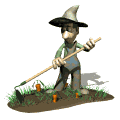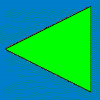The First Temple in Jerusalem is Built
Comments for Study 5
Pick to read this Bible passage in a separate window.
MAPS OF ISRAEL AND JUDAH
A MAP OF THE DIVISION OF CANAAN
A MAP OF THE UNITED KINGDOM OF ISRAEL
A MAP OF JERUSALEM AND THE TEMPLE
OLD TESTAMENT BOOKS TIMELINE
A LIST OF ISRAEL'S KINGS AND PROPHETS
A TIMELINE OF ISRAEL'S HISTORY
I. The Layout (6:1-8)
>1. Why is the exact timing of the beginning of the work important? (1)
* 1 Kings 6:1 "In the four hundred and eightieth year after the Israelites had come out of Egypt, in the fourth year of Solomon's reign over Israel, in the month of Ziv, the second month, he began to build the temple of the LORD."
* 2 Chronicles chapters 2 and 3 also record the building of the temple.
* The temple was built on Mount Moriah (aka Mount Zion) starting in the spring of 966 B.C. The Lord had appeared to David on this mountain (1). The meeting was not a pleasant one. 70,000 men died of a plague and the Lord had sent an angel to destroy Jerusalem (1 Chron. 21) because David had counted the fighting men.
The angel (who is identified as the LORD in 2 Chronicles) had paused before he continued into the city. His pause was long enough for David and the city officials to go to the place. I imagine that the LORD had paused because he was hovering over the place where Abraham almost offered his son Isaac many centuries earlier (Gen. 22). The Lord remembered Abraham's faith, hope, and love for him and so did David and city officials.
God does not forget his people's faith, hope, and love. They are the greatest gifts, the only gifts we can give to him. The impact lasts for generations in ways I cannot even begin to imagine. The world believes these acts are nothing. Even I wonder, "Will a descendant of mine know how important my faith in Jesus has been? Will they also have the same faith?" The LORD Jesus knows.
* "four hundred and eightieth year after the Israelites had come out of Egypt, in the fourth year of Solomon's reign" -Synchronizations between certain events in the reigns of later Israelites kings and Assyrian chronological records fix the fourth year of Solomon's reign at 966 B.C. If Israel's exodus is placed 480 years prior to 966, it would have occured around 1,446 (according to the chronology followed by some) during the rule of the 18th-dynasty Egyptian pharaoh, Amunhotep II. On the basis of Exodus 1:11 and certain other historical considerations, however, some have concluded that the exodus could not have occurred prior to the rule of the 19th-dynastry pharoah, Rameses II -thus not until arround 1,290 B.C. This would mean that the 480 years of this verse would be understood as either a schematic (perhaps representative of 12 generations multiplied by the conventional, but not always actual, 40-year length of a generation) or aggregate figure (the combined total of a number of subsidiary time periods, which in reality were partly concurrent, exapmples of which are to be found in Egyptian and Mesopotamian records.)
*
*
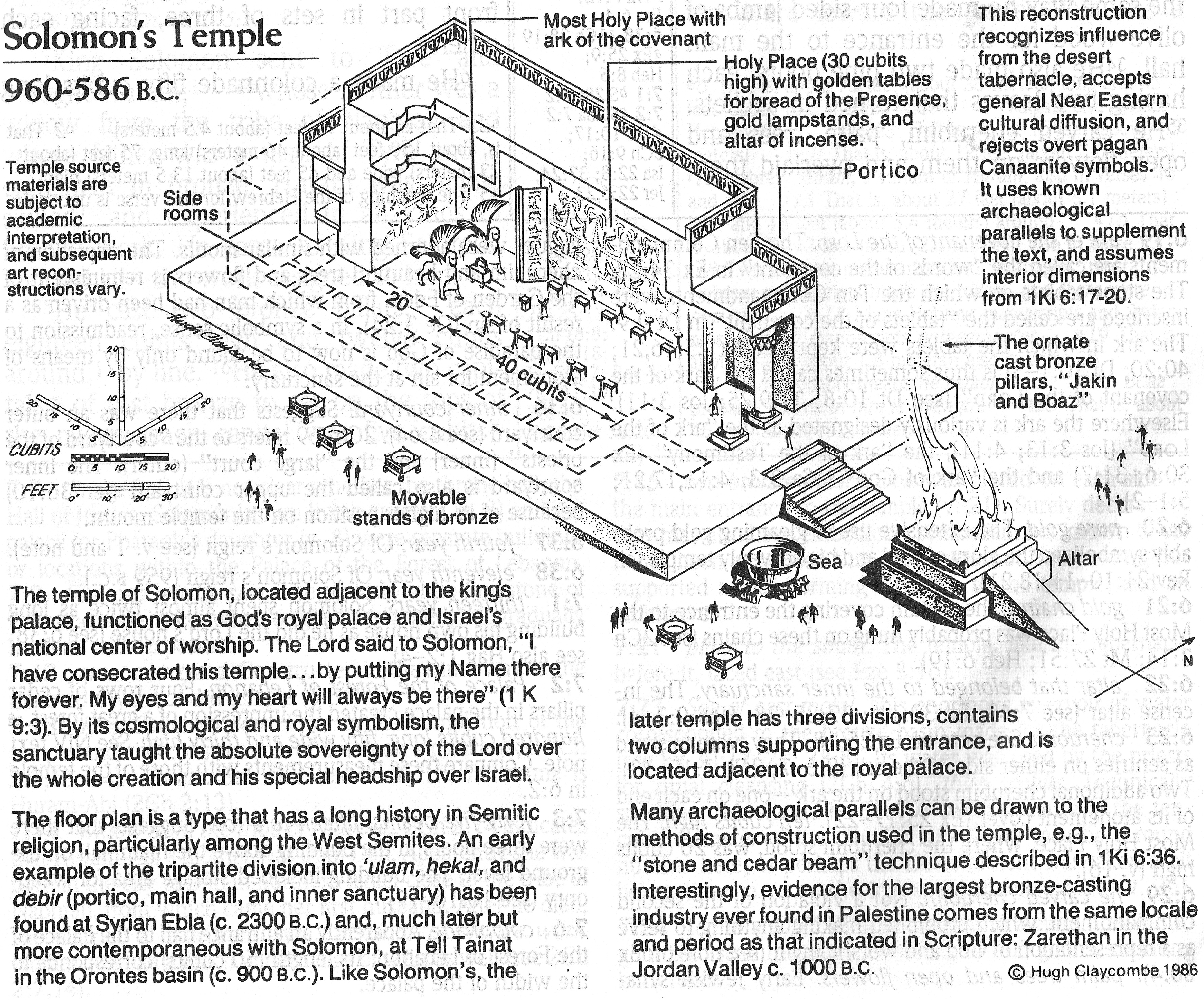
* See drawing of Solomon's temple to the right from the NIV Study Bible by Hugh Claycombe (copyright 1986) no longer in print. Temple source materials are subject to academic interpretation, and subsequent art reconstructions wary. Use the link above to see further renderings of Jerusalem and the temple mount.
>Draw a proportional sketch of the temple as described in verses 2-6 and 8-10.
* 1 Kings 6:2-6 "The temple that King Solomon built for the LORD was sixty cubits long, twenty wide and thirty high. The portico at the front of the main hall of the temple extended the width of the temple, that is twenty cubits, and projected ten cubits from the front of the temple. He made narrow clerestory windows in the temple. Against the walls of the main hall and inner sanctuary he built a structure around the building, in which there were side rooms. The lowest floor was five cubits wide, the middle floor six cubits and the third floor seven. He made offset ledges around the outside of the temple so that nothing would be inserted into the temple walls."
* 1 Kings 6:8-10 "The entrance to the lowest floor was on the south side of the temple; a stairway led up to the middle level and from there to the third. So he built the temple and completed it, roofing it with beams and cedar planks. And he built the side rooms all along the temple. The height of each was five cubits, and they were attached to the temple by beams of cedar."
* "temple that Solomon built" -The temple was patterned after the tabernacle (and, in general, other temples of the time) and was divided into three major areas; the Most Holy Place, the Holy Place and the outer courtyard. The Most Holy Place in the temple was cubical, as it probably was in the tabernacle. The dimensions of the temple in most instances seem to be double those of the tabernacle (Exodus 26:15-30, 36:20-34).
* Chroniclers chapters 3 and 4 considerably curtailed the description of the temple's construction found in Kings chapters 6 and 7, omitting completely 1 Kings 6:4-20. This abridgment probably indicates that the Chromiclers' audience was familiar with the details of the earlier history and that the temple of the restoration period was less elaborate than the original Solomonic structure (Hag. 2:3). On the other hand, the Chronicler(s) goes into more detail on the furnishings and implements (3:6-9; 4:1, 6-9).
*
*
*
>Why make the blocks as described in verse 7?
* 1 Kings 6:7 "In building the temple, only blocks dressed at the quarry were used, and no hammer, chisel or any other iron tool was heard at the temple site while it was being built."
*
*
*
*
II. If You Will... I Will (6:11-13)
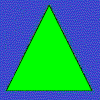
>2. When did the word of the Lord come to Solomon? (11-12a)
* 1 Kings 6:11-12a "The word of the LORD came to Solomon: As for this temple you are building..."
*
*
*
*
>What does the words "as for this temple you are building" imply about the rest of the Lord's statement?
*
*
*
*
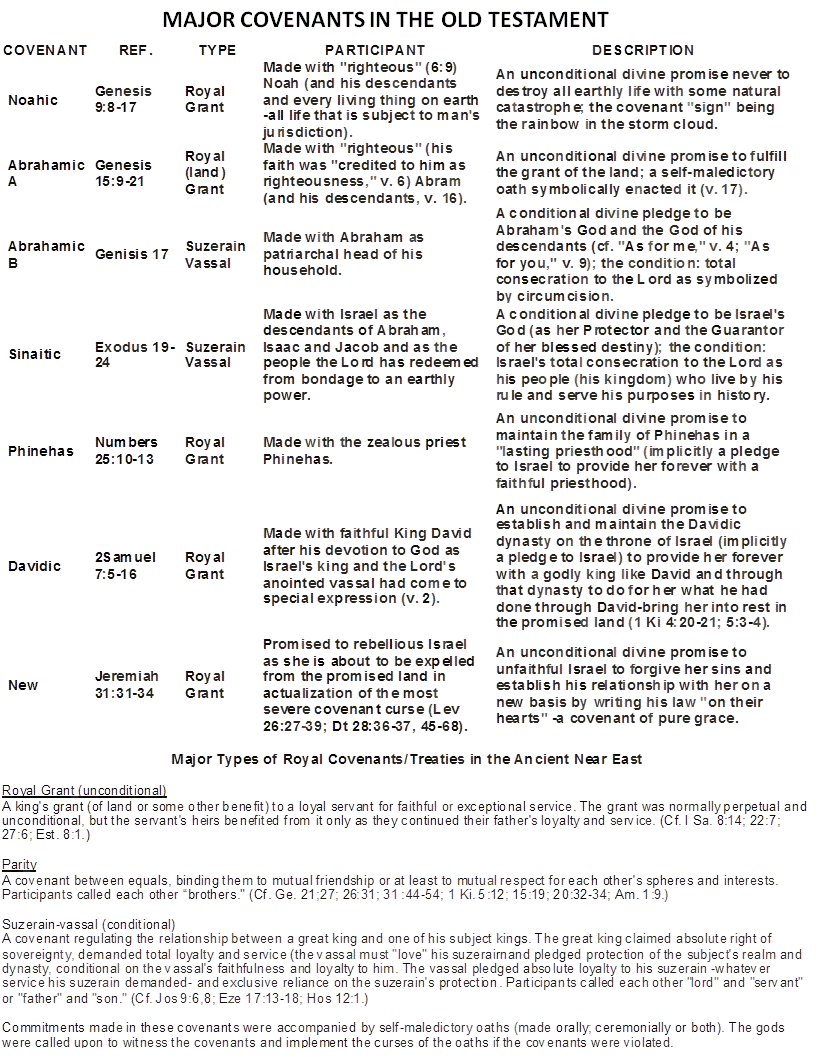
>3. What four conditions did Israel and Judah have to follow? (12b)
* 1 Kings 6:12b "if you follow my decrees, carry out my regulations and keep all my commands and obey them"
*
*
*
*
>Considering Exodus 19:5-6; Lev. 18:1-5, 19:37, 20:7-8, 20:22-24, 25:18, and 1 Samuel 12:13-15 how was the Lord consistent in his relationship with Israel?
* Exodus 19:5-6 "Now if you obey me fully and keep my covenant, then out of all nations you will be my treasured possession. Although the whole earth is mine, you will be for me a kingdom of priests and a holy nation.' These are the words you are to speak to the Israelites."
* Leviticus 18:1-5 "The LORD said to Moses, "Speak to the Israelites and say to them: 'I am the LORD your God. You must not do as they do in Egypt, where you used to live, and you must not do as they do in the land of Canaan, where I am bringing you. Do not follow their practices. You must obey my laws and be careful to follow my decrees. I am the LORD your God. Keep my decrees and laws, for the man who obeys them will live by them. I am the LORD."
* Leviticus 19:37 "'Keep all my decrees and all my laws and follow them. I am the LORD.'"
* Leviticus 20:7-8 "'Consecrate yourselves and be holy, because I am the LORD your God. Keep my decrees and follow them. I am the LORD, who makes you holy."
* Leviticus 20:22-24 "'Keep all my decrees and laws and follow them, so that the land where I am bringing you to live may not vomit you out. You must not live according to the customs of the nations I am going to drive out before you. Because they did all these things, I abhorred them. But I said to you, "You will possess their land; I will give it to you as an inheritance, a land flowing with milk and honey." I am the LORD your God, who has set you apart from the nations."
* Leviticus 25:18 "'Follow my decrees and be careful to obey my laws, and you will live safely in the land."
* 1 Samuel 12:13-15 "Now here is the king you have chosen, the one you asked for; see, the LORD has set a king over you. If you fear the LORD and serve and obey him and do not rebel against his commands, and if both you and the king who reigns over you follow the LORD your God--good! But if you do not obey the LORD, and if you rebel against his commands, his hand will be against you, as it was against your fathers."
>4. If they did what the Lord required what three things did he promise to do? (12c-13)
* 1 Kings 6:12c-13 "I will fulfill through you the promise I gave to David your father. And I will live among the Israelites and will not abandon my people Israel."
*
*
*
>What was the promise he made to David? (2 Sam. 7:5-16)
* 2 Samuel 7:5-16 "Go and tell my servant David, 'This is what the LORD says: Are you the one to build me a house to dwell in? I have not dwelt in a house from the day I brought the Israelites up out of Egypt to this day. I have been moving from place to place with a tent as my dwelling. Wherever I have moved with all the Israelites, did I ever say to any of their rulers whom I commanded to shepherd my people Israel, "Why have you not built me a house of cedar?" Now then, tell my servant David, 'This is what the LORD Almighty says: I took you from the pasture and from following the flock to be ruler over my people Israel. I have been with you wherever you have gone, and I have cut off all your enemies from before you. Now I will make your name great, like the names of the greatest men of the earth. And I will provide a place for my people Israel and will plant them so that they can have a home of their own and no longer be disturbed. Wicked people will not oppress them anymore, as they did at the beginning and have done ever since the time I appointed leaders over my people Israel. I will also give you rest from all your enemies. "'The LORD declares to you that the LORD himself will establish a house for you: When your days are over and you rest with your fathers, I will raise up your offspring to succeed you, who will come from your own body, and I will establish his kingdom. He is the one who will build a house for my Name, and I will establish the throne of his kingdom forever. I will be his father, and he will be my son. When he does wrong, I will punish him with the rod of men, with floggings inflicted by men. But my love will never be taken away from him, as I took it away from Saul, whom I removed from before you. Your house and your kingdom will endure forever before me; your throne will be established forever.'"
*
*
*
*
>5. What does the phrase "live among" mean?
*
*
*
*
>What did he call the Israelites?
* "my people"
*
*
*
*
>What does the fact that they continually did not keep their end of the covenant and he remained with them so long tell us about the Lord? (Ex. 34:6-7; Jer. 15:15)
* Exodus 34:6-7 "And he passed in front of Moses, proclaiming, "The LORD, the LORD, the compassionate and gracious God, slow to anger, abounding in love and faithfulness, maintaining love to thousands, and forgiving wickedness, rebellion and sin. Yet he does not leave the guilty unpunished; he punishes the children and their children for the sin of the fathers to the third and fourth generation."
* Jeremiah 15:15 "You understand, O LORD; remember me and care for me. Avenge me on my persecutors. You are long-suffering--do not take me away; think of how I suffer reproach for your sake."
*
*
*
>6. What New Covenant are we under? (Jer. 31:31-34; Luke 22:20; Rom. 3:21-26)
* Jeremiah 31:31-34 "The time is coming," declares the LORD, "when I will make a new covenant with the house of Israel and with the house of Judah. It will not be like the covenant I made with their forefathers when I took them by the hand to lead them out of Egypt, because they broke my covenant, though I was a husband to them," declares the LORD. "This is the covenant I will make with the house of Israel after that time," declares the LORD. "I will put my law in their minds and write it on their hearts. I will be their God, and they will be my people. No longer will a man teach his neighbor, or a man his brother, saying, 'Know the LORD,' because they will all know me, from the least of them to the greatest," declares the LORD. "For I will forgive their wickedness and will remember their sins no more."
* Luke 22:20 "In the same way, after the supper he took the cup, saying, "This cup is the new covenant in my blood, which is poured out for you."
* Romans 3:21-26 "But now a righteousness from God, apart from law, has been made known, to which the Law and the Prophets testify. This righteousness from God comes through faith in Jesus Christ to all who believe. There is no difference, for all have sinned and fall short of the glory of God, and are justified freely by his grace through the redemption that came by Christ Jesus. God presented him as a sacrifice of atonement, through faith in his blood. He did this to demonstrate his justice, because in his forbearance he had left the sins committed beforehand unpunished-- he did it to demonstrate his justice at the present time, so as to be just and the one who justifies those who have faith in Jesus."
*
*
III. Inside the Temple (6:14-38)

>7. What did the interior look like? (14-18)
* 1 Kings 6:14-18 "So Solomon built the temple and completed it. He lined its interior walls with cedar boards, paneling them from the floor of the temple to the ceiling, and covered the floor of the temple with planks of pine. He partitioned off twenty cubits at the rear of the temple with cedar boards from floor to ceiling to form within the temple an inner sanctuary, the Most Holy Place. The main hall in front of this room was forty cubits long. The inside of the temple was cedar, carved with gourds and open flowers. Everything was cedar; no stone was to be seen."
* "lined its interior walls with cedar boards, paneling them from he floor of the temple to the ceiling" -2 Chronicles 3:8 says "overlaid the inside with six hundred talents of fine gold" "Lined" in the orginal Hebrew is "sapa." "Sapa" is translated lined, overlay, covered, or garnished. Some say the intent here is "inlaid," which would give a more correct picture with 1 Kings 6:14-18: not that the entire interior was covered with gold leaf, but that designs (palm trees, chains) were inlaid with gold leaf (5).
* "Most Holy Place" -The same terminology was used for the inner sanctuary house the Ark in the tabernacle (Exodus 26:33-34; Lev. 16:2, 16-17, 20, 23).
*
*
*
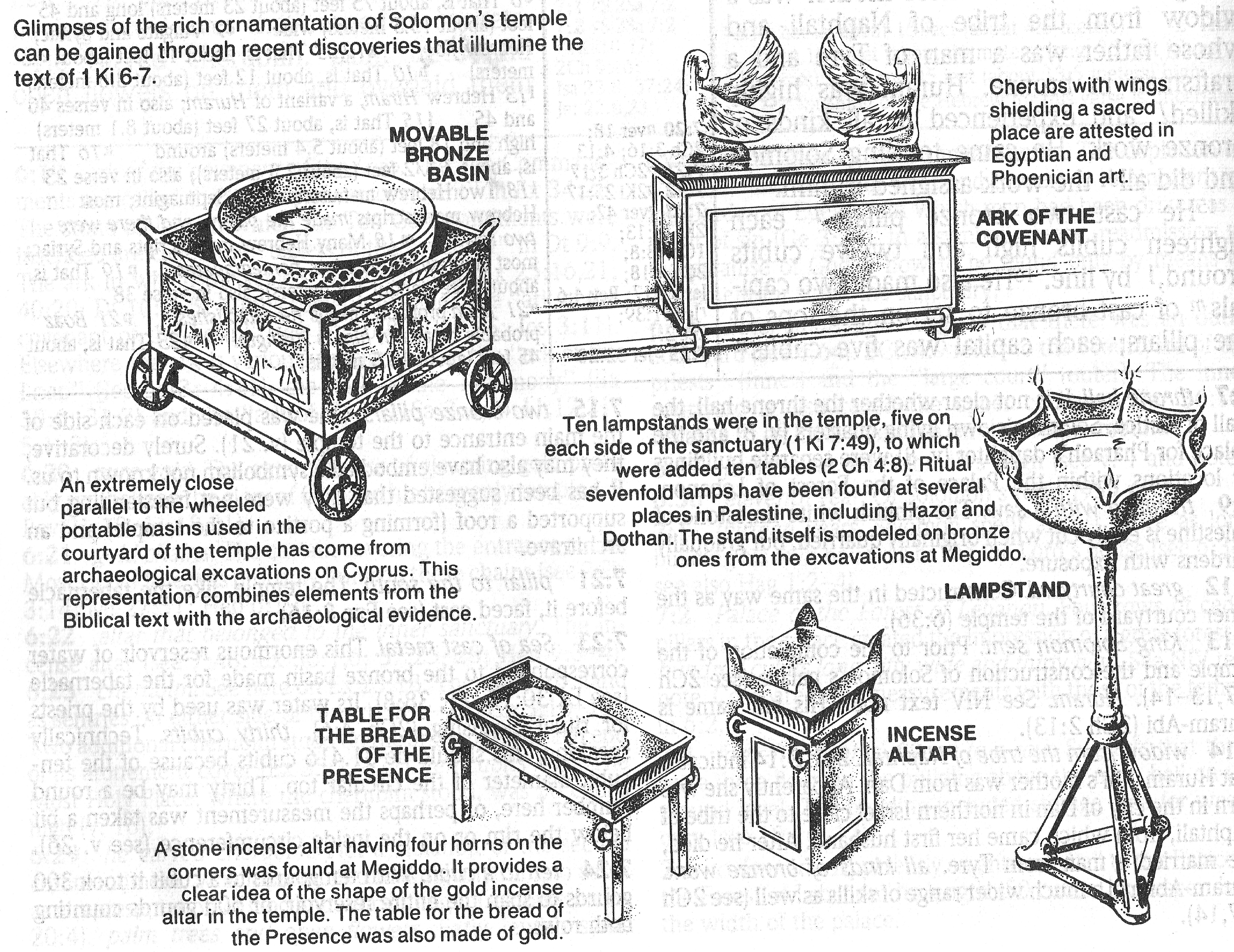
* See drawings of the temple furnishings to the right from the NIV Study Bible. Glimpses of the rich ornamentation of Solomon's temple can be gained through recent discoveries that illumine the text of 1 Kings 6-7 and 2 Chronicles 1-4.
>What was the ark of the covenant? (19; Exodus 25:22; and 1 Chron. 28:2)
* 1 Kings 6:19 "He prepared the inner sanctuary within the temple to set the ark of the covenant of the LORD there."
* Exodus 25:22 "There, above the cover between the two cherubim that are over the ark of the Testimony, I will meet with you and give you all my commands for the Israelites."
* 1 Chronicles 28:2 "King David rose to his feet and said: "Listen to me, my brothers and my people. I had it in my heart to build a house as a place of rest for the ark of the covenant of the LORD, for the footstool of our God, and I made plans to build it."
* "ark of the covenant of the LORD" -The Ten Commandments are called the "words of the covenant" in Exodus 34:28. The stone tablets on which the Ten Commandments were inscribed are called the "tablets of the covenant" in Deut. 9:9. The ark in which the tablets were kept (Exodus 25:16, 21; 40:20; Deut. 10:1-5) is thus sometimes called the "ark of the LORD" (Joshua 3:13, 4:11), the "ark of the Testimony" (Exodus 30:6, 31:7), and the "ark of God" (1 Samual 3:3, 4:11, 17, 21, 5:1-2).
*
>8. With all the gold in the inner sanctuary, what would happen if a light would be in there? (20-22; Exodus 24:15-17)
* 1 Kings 6:20-22 "The inner sanctuary was twenty cubits long, twenty wide and twenty high. He overlaid the inside with pure gold, and he also overlaid the altar of cedar. Solomon covered the inside of the temple with pure gold, and he extended gold chains across the front of the inner sanctuary, which was overlaid with gold. So he overlaid the whole interior with gold. He also overlaid with gold the altar that belonged to the inner sanctuary."
* Exodus 24:15-17 "When Moses went up on the mountain, the cloud covered it, and the glory of the LORD settled on Mount Sinai. For six days the cloud covered the mountain, and on the seventh day the LORD called to Moses from within the cloud. To the Israelites the glory of the LORD looked like a consuming fire on top of the mountain."
* "twenty cubits long, twenty cubits wide and twenty high" -making the dimensions of the Most Holy Place a perfect cube, as probably also in the tabernacle. In the New Jerusalem there is no temple (Rev. 21:22); rather, the whole city is in the shape of a cube (Rev. 21:16), for the whole city become "the Most Holy Place".
* "pure gold" -The extensive use of gleaming gold probably symbolized the glory of God and his heavenly temple (Rev. 21:10-11, 18, 21).
* "gold chains" -The curtain covering the entrance to the Most Holy Place was probably hung on these chains (2 Chron. 3:14; Matt 27:51; Heb. 6:19).
* "altar that belonged to the inner sancturary" -The incense altar (1 Kings 7:48; Exodus 30:1, 6, 37:25-28; Hebrews 9:3-4).
>How does this relate to what we are told about Jesus? (Matt. 17:1-2; John 1:3-14; and 2 Cor. 4:6; Rev. 21:23)
* Matthew 17:1-2 "After six days Jesus took with him Peter, James and John the brother of James, and led them up a high mountain by themselves. There he was transfigured before them. His face shone like the sun, and his clothes became as white as the light."
* John 1:3-14 "Through him all things were made; without him nothing was made that has been made. In him was life, and that life was the light of men. The light shines in the darkness, but the darkness has not understood it. There came a man who was sent from God; his name was John. He came as a witness to testify concerning that light, so that through him all men might believe. He himself was not the light; he came only as a witness to the light. The true light that gives light to every man was coming into the world. He was in the world, and though the world was made through him, the world did not recognize him. He came to that which was his own, but his own did not receive him. Yet to all who received him, to those who believed in his name, he gave the right to become children of God-- children born not of natural descent, nor of human decision or a husband's will, but born of God. The Word became flesh and made his dwelling among us. We have seen his glory, the glory of the One and Only, who came from the Father, full of grace and truth."
* 2 Corinthians 4:6 "For God, who said, "Let light shine out of darkness," made his light shine in our hearts to give us the light of the knowledge of the glory of God in the face of Christ."
* Revelation 21:23 "The city does not need the sun or the moon to shine on it, for the glory of God gives it light, and the Lamb is its lamp."
*
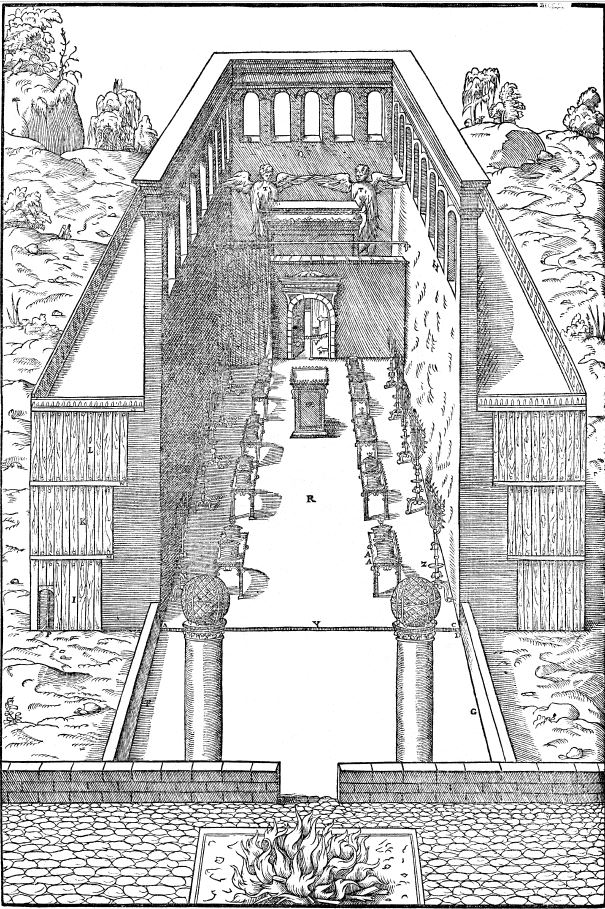
* See a drawing by Merlin, Guillaume (1538-1574) to the right is a rendering of the inner court of the temple with ritual objects. Courtesy of the Digital Image Archive, Pitts Theology Library, Candler School of Theology, Emory University: http://www.pitts.emory.edu.
>9. What are cherubim and what is their purpose? (23-35; Gen. 3:24; Psalm 18:10; Ezekiel 10:3-8, 20-21)
* 1 Kings 6:23-35 "In the inner sanctuary he made a pair of cherubim of olive wood, each ten cubits high. One wing of the first cherub was five cubits long, and the other wing five cubits--ten cubits from wing tip to wing tip. The second cherub also measured ten cubits, for the two cherubim were identical in size and shape. The height of each cherub was ten cubits. He placed the cherubim inside the innermost room of the temple, with their wings spread out. The wing of one cherub touched one wall, while the wing of the other touched the other wall, and their wings touched each other in the middle of the room. He overlaid the cherubim with gold. On the walls all around the temple, in both the inner and outer rooms, he carved cherubim, palm trees and open flowers. He also covered the floors of both the inner and outer rooms of the temple with gold. "For the entrance of the inner sanctuary he made doors of olive wood with five-sided jambs. And on the two olive wood doors he carved cherubim, palm trees and open flowers, and overlaid the cherubim and palm trees with beaten gold. In the same way he made four-sided jambs of olive wood for the entrance to the main hall. He also made two pine doors, each having two leaves that turned in sockets. He carved cherubim, palm trees and open flowers on them and overlaid them with gold hammered evenly over the carvings."
* Genesis 3:24 "After he drove the man out, he placed on the east side of the Garden of Eden cherubim and a flaming sword flashing back and forth to guard the way to the tree of life."
* Psalm 18:10 "He mounted the cherubim and flew; he soared on the wings of the wind."
* Ezekiel 10:3-8 "Now the cherubim were standing on the south side of the temple when the man went in, and a cloud filled the inner court. Then the glory of the LORD rose from above the cherubim and moved to the threshold of the temple. The cloud filled the temple, and the court was full of the radiance of the glory of the LORD. The sound of the wings of the cherubim could be heard as far away as the outer court, like the voice of God Almighty when he speaks. When the LORD commanded the man in linen, "Take fire from among the wheels, from among the cherubim," the man went in and stood beside a wheel. Then one of the cherubim reached out his hand to the fire that was among them. He took up some of it and put it into the hands of the man in linen, who took it and went out. (Under the wings of the cherubim could be seen what looked like the hands of a man.)"
* Ezekiel 10:20-21 "These were the living creatures I had seen beneath the God of Israel by the Kebar River, and I realized that they were cherubim. Each had four faces and four wings, and under their wings was what looked like the hands of a man."
* "cherubim" -Cherubim are probably similar to the carvings of winged sphinzes that adorned the armrests of royal thrones in many parts of the ancient Near East (Gen. 3:4). In the Old Testament the cherubim were symbolic attendants that marked the place of the Lord's "enthronement" in his earthly kingdom (1 Sam. 6:2; 2 Kings 19:15; Psalms 99:1). From the cover of the ark (God's symolic throne on earth) the Lord gave directions to Moses (Numbers 7:89). Later the ark's presence in the temple at Jerusalem woud designate it as God's earthly royal city (Psalms 9:11). The cherubim were to stand as sentries on either side of the ark (Exodus 25:18; 1 Kings 8:6-7; 2 Chron. 3:10-13). Two additional cherubim stood on the ark -one on each end of its atonement cover (Exodus 25:17-22).
>10. What is the purpose of a courtyard? (36; Lev. 6:16; Jer. 26:2)
* 1 Kings 6:36 "And he built the inner courtyard of three courses of dressed stone and one course of trimmed cedar beams."
* Leviticus 6:16 "Aaron and his sons shall eat the rest of it, but it is to be eaten without yeast in a holy place; they are to eat it in the courtyard of the Tent of Meeting."
* Jeremiah 26:2 "This is what the LORD says: Stand in the courtyard of the LORD's house and speak to all the people of the towns of Judah who come to worship in the house of the LORD. Tell them everything I command you; do not omit a word."
*
*
>How long did it take Solomon to build the temple? (37-38)
* 1 Kings 6:37-38 "The foundation of the temple of the LORD was laid in the fourth year, in the month of Ziv. In the eleventh year in the month of Bul, the eighth month, the temple was finished in all its details according to its specifications. He had spent seven years building it."
*
*
*
>What is the Lord's temple now? (1 Cor. 3:16-17; and 2 Cor. 6:16)
* 1 Corinthians 3:16-17 "Don't you know that you yourselves are God's temple and that God's Spirit lives in you? If anyone destroys God's temple, God will destroy him; for God's temple is sacred, and you are that temple."
* 2 Corinthians 6:16 "What agreement is there between the temple of God and idols? For we are the temple of the living God. As God has said: "I will live with them and walk among them, and I will be their God, and they will be my people."
*
*
*

|



